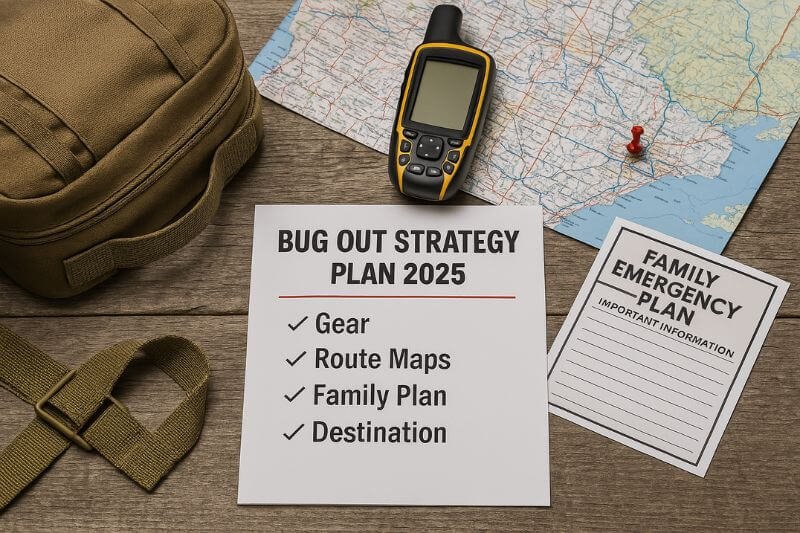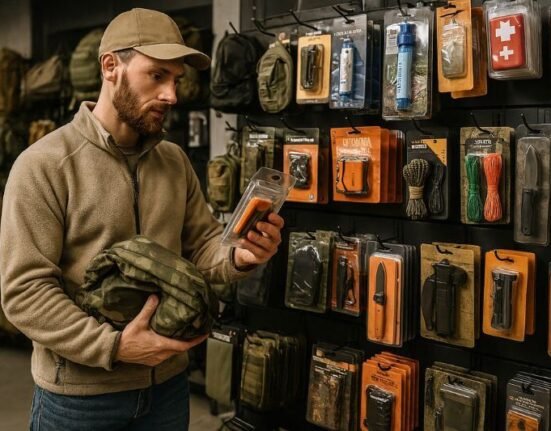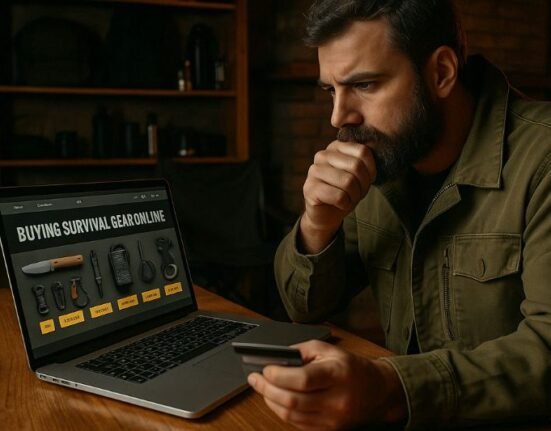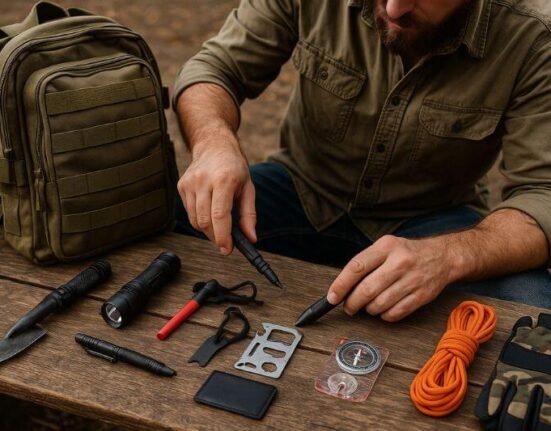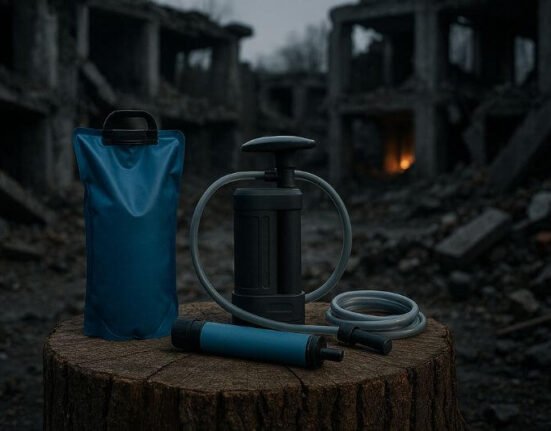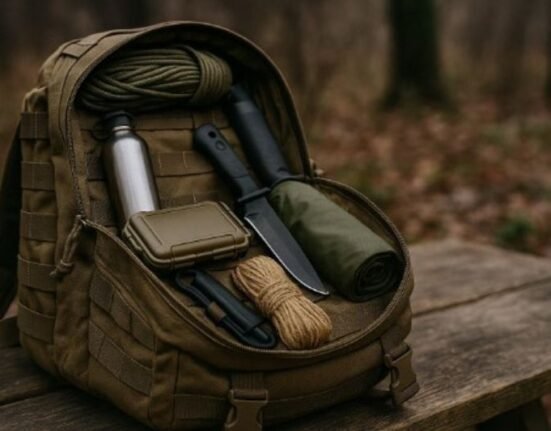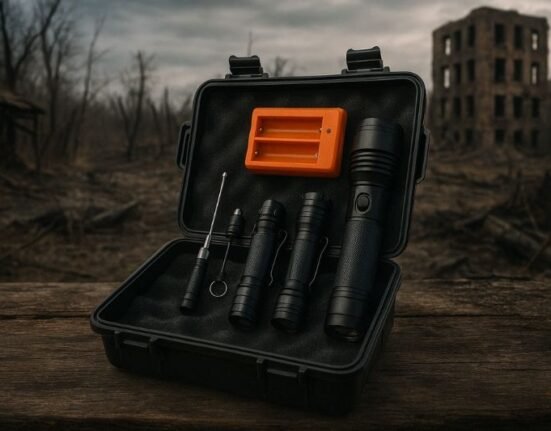In an age where societal systems are increasingly fragile, having a bug out strategy isn’t optional — it’s essential. Whether triggered by civil unrest, grid failure, or environmental disaster, your ability to leave quickly, safely, and effectively can determine your survival.
This guide will walk you through building the ultimate bug out strategy for 2025 — from planning and timing to execution and destination. No fluff. Just actionable, experience-tested advice.
Why You Need a Bug Out Strategy in 2025
From the war in Ukraine to rising climate threats and cyberattacks on infrastructure, global signals are clear: systems can collapse fast. In that chaos, people freeze. Resources vanish. Roads jam. You need a plan — now.
“A bug out strategy is more than a bag. It’s a mindset, a roadmap, and a lifeline.” — Urban Crisis Readiness Report, 2024
This isn’t paranoia — it’s personal resilience.
1. What a Bug Out Strategy Really Is (and Isn’t)
Let’s clear the confusion.
A bug out strategy is not just owning a backpack. It’s a comprehensive evacuation plan for when staying home is no longer safe. It includes:
- Trigger points: When to leave
- Gear: What to bring
- Routes: Where and how to get out
- Destination: Where to go
- Communication: Who knows the plan
- Contingencies: What to do if it fails
❌ A bug out strategy is NOT:
- Waiting until the last second
- Relying on Google Maps during a blackout
- Copy-pasting someone else’s plan from YouTube
✅ It must be personal, localized, and practiced.
2. When to Bug Out: Defining Your Trigger Points
Most people wait too long — and pay the price. To avoid that, you need to define your “go now” conditions in advance.
🔥 Examples of Bug Out Triggers:
- Martial law or military deployment in your area
- Local power outage during widespread national grid threats
- Reports of looting or riots within 5 miles
- Wildfire evacuation order or nearby smoke plume
- Collapse of banking systems (ATMs offline, sudden cash withdrawal limits)
“Deciding when to bug out should not be emotional. It must be pre-defined and rehearsed.” — FEMA Crisis Behavior Study, 2023
📝 Keep a printed list of trigger events near your main exit and inside your bug out bag.
3. Building a Personalized Bug Out Timeline
Bugging out too early is disruptive. Too late can be fatal. Your strategy should outline phases with corresponding actions.
🧭 3-Phase Bug Out Timeline:
| Phase | Action | Signal to Move |
|---|---|---|
| Phase 1 | Gear prep, alerts, vehicle refueling | Early warnings, news alerts |
| Phase 2 | Family alert, supplies in vehicle, cash | Confirmed local threat |
| Phase 3 | Departure, route navigation, check-ins | Immediate danger |
💡 Include a checklist per phase to streamline actions under stress.
4. Bug Out Bag Essentials (Tier 1 Mobilization)
Your bug out bag is your mobile survival system — not a storage locker. It should be designed for 72 hours of autonomy.
🧳 Core Categories:
- Water (filter, tablets, 2L storage)
- Food (energy bars, freeze-dried meals)
- Shelter (tarp, bivvy, sleeping pad)
- Fire (ferro rod, lighter, tinder)
- Tools (knife, multitool, duct tape)
- Medical (trauma kit, meds)
- Clothing (layered, compact, durable)
- Navigation (compass, map, radio)
🧠 For a complete checklist, read:
🔗 Bug Out Bag Essentials: What You Actually Need vs. Useless Gear
5. Choosing Your Bug Out Destination
Don’t just “head for the hills.” You need a realistic, reachable, and prepared location. Options include:
🏞️ Bug Out Location Types:
- Family land or cabin (ideal but rare)
- Trusted friend’s rural home (mutual pact)
- Public land (requires stealth + bushcraft)
- Abandoned property (risky, scout first)
- Designated community retreat (paid membership)
Selection Criteria:
- Outside high-density zones (50+ miles from city)
- Water access (river, lake, well)
- Concealment (trees, elevation, no direct roads)
- Defensibility (natural barriers)
- Resources nearby (firewood, game, shelter material)
✅ For more on location planning, see:
🔗 How to Choose the Best Bug Out Location Based on Risk Maps
6. Planning and Mapping Your Bug Out Routes
Even with the perfect bag and a secure destination, you’re still vulnerable if you can’t get there. That’s why route planning is a central pillar of any bug out strategy.
🗺️ How to Map Your Routes:
- Identify at least 3 routes to your bug out location:
- Primary (fastest)
- Secondary (lesser-known roads)
- Tertiary (off-road, walking path, last resort)
- Avoid highways and bottlenecks near:
- Hospitals
- Shopping centers
- Fuel stations
- Police or government buildings
🔍 Tools to Use:
- Printed topographic maps (laminated)
- GPS device with preloaded maps (offline)
- Compass and pace beads (if GPS fails)
- CalTopo, Gaia GPS, or OpenStreetMap for risk mapping
📎 For advanced tips, read:
🔗 Bug Out Route Planning: Tools, Maps, and Mistakes to Avoid
7. Choosing the Right Bug Out Vehicle (or No Vehicle at All)
Your bug out vehicle is not just about horsepower — it’s about reliability, range, and storage. It must handle various terrains and be ready to go at all times.
🚗 What Makes a Good Bug Out Vehicle:
| Feature | Details |
|---|---|
| Fuel Range | At least 300+ miles per tank |
| Storage | Room for gear, family, water |
| Clearance | High enough for off-road |
| Stealth | No “tactical” decals or flashy gear |
| Durability | 4×4 or AWD preferred |
🛠️ Keep in Vehicle:
- Portable air compressor
- Spare fuel canisters (with stabilizer)
- Recovery gear (tow straps, traction boards)
- Maintenance kit (oil, coolant, jumper cables)
- Window breaker, seatbelt cutter
✅ For vehicle-specific recommendations, see:
🔗 Bug Out Vehicle Guide: Best Rigs for Escape and Off-Road Survival
8. Communication and Check-In Protocols
Comms often fail first during disasters. Without a plan, families get separated and confused.
📡 Your Communication Plan Must Include:
- Hand-crank or solar-powered emergency radio (NOAA alerts)
- Two-way radios (GMRS/FRS) for local comms
- Emergency contact card (laminated, in bag)
- Digital + paper maps with meeting points circled
- Pre-set communication windows (e.g. “check-in every 4 hours at 9am, 1pm, 5pm”)
🔐 Consider using code words or phrases for privacy if intercepted.
9. Coordinating a Family Bug Out Strategy
Prepping alone is hard. Prepping with others — especially kids, elders, or pets — adds complexity, but also resilience.
👨👩👧👦 Key Family Prepper Roles:
- Leader: decision-making and route control
- Scout: maps, terrain, recon
- Medic: first aid management
- Quartermaster: gear check, food rationing
- Communicator: radios, updates, documents
🧒 Bug Out With Kids:
- Lightweight packs only
- Include comfort items (stuffed animal, snack pouch)
- Tag ID + emergency card
- Assign simple “helper” roles
🐾 Bug Out With Pets:
- Collapsible bowl
- 72h food supply + leash
- Shot/vaccine record
🔗 More tips in:
Family Bug Out Strategy: How to Prepare With Kids and Elderly
10. Common Bug Out Strategy Mistakes to Avoid
Planning is great. But bad execution can get you stuck — or worse. Here’s what to watch for:
❌ Top Mistakes:
- Waiting too long to leave
- Not practicing your plan at least once
- Overpacking your bag or vehicle
- Using GPS only — no printed maps
- Bringing gear you’ve never tested
- No backup location if your main one is compromised
✅ Solution: Run a quarterly drill — simulate real bug out conditions with your family or group.
🧭 Consolidated Bug Out Strategy Checklist
| Category | Essentials Included |
|---|---|
| Trigger Points | Printed list, alert systems, thresholds |
| Timeline | Phased steps + gear assignments |
| Bug Out Bag | 72h kit (tested, weather-appropriate, layered) |
| Route Maps | 3x per destination, with updates |
| Vehicle | Fueled, stocked, hidden tools & supplies |
| Communication | Radios, contact cards, printed family plan |
| Destination | Pre-scouted, secure, defensible |
| Family Coordination | Roles assigned, pet/child-ready kits |
🗂️ Store this checklist in your bug out binder and review every 6 months.
11. Real-World Bug Out Scenario (Step-by-Step Simulation)
Let’s walk through what a real bug out could look like in 2025, based on a plausible situation:
🚨 Scenario: National Grid Failure & Social Unrest
Day 1 — Morning:
Nationwide power outage. Internet, banking, and communications go down. Your radio picks up a brief message confirming it’s not local.
✅ Trigger #1: “Grid failure + national impact”
You activate Phase 1: fuel vehicle, pack last-minute gear, notify family, check bug out checklist.
Day 1 — Afternoon:
City streets are still calm, but ATMs are failing. Grocery store lines are forming. Local authorities offer no timeline for restoration.
✅ Trigger #2: “Financial disruption + resource rush”
You move to Phase 2: bug out bag loaded, backup devices charged, team roles assigned.
Day 1 — Evening:
Looting begins in nearby districts. Police presence is thin. Your area experiences rolling blackouts and car break-ins.
✅ Trigger #3: “Security threat within 5 miles”
You initiate Phase 3: departure. Family piles into prepped vehicle. GPS is down — you rely on printed route #2. You avoid main roads. It takes 3x longer than planned, but you reach the fallback location with all supplies intact.
🧠 Debrief:
Every action followed the plan. No improvisation. No panic. The bug out strategy did the work.
12. Your Plan B: What If the Bug Out Fails?
No plan survives contact with reality — so always prepare for failure.
🔄 Backup Elements:
- Secondary bug out location (in opposite direction)
- Hidden cache of food and gear (en route or near home)
- INCH bag (“I’m Never Coming Home” bag for long-term displacement)
- Community meet-up points (prearranged with group or allies)
- Urban fallback plan (stay hidden and mobile inside the city)
📦 Consider caching a sealed plastic bin with 72h supplies at a midway point.
FAQ: Bug Out Strategy 2025
How far should my bug out location be from home?
At least 50–100 miles away from dense urban zones, depending on terrain and threat level.
Can I bug out on foot?
Yes — if your route is planned, you’ve practiced it, and your pack is light enough to carry long distances.
Should I rely on GPS?
No. Always carry printed, waterproof maps with key checkpoints and landmarks marked manually.
How do I practice my bug out strategy?
- Simulate departure with full gear
- Test routes and timing during different seasons
- Roleplay trigger scenarios with family









